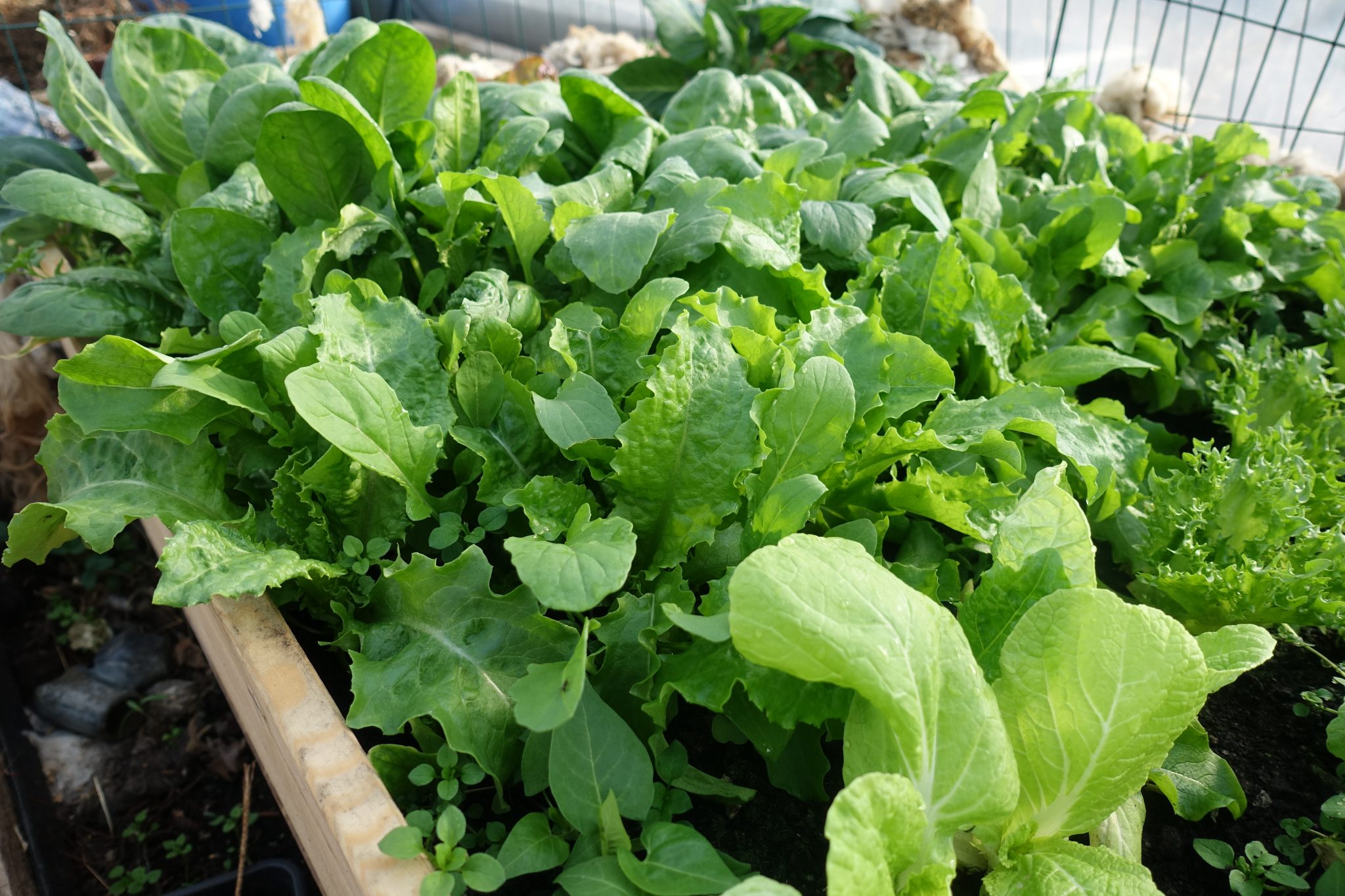Grow Winter Leafy Greens Indoors: Easy Guide

Are you dreaming of fresh, crisp salads even in the dead of winter? Imagine transforming your home into a lush, indoor garden, brimming with vibrant leafy greens. Growing leafy greens indoors during winter is not only possible but also incredibly rewarding. Let's dive into this exciting world of urban agriculture and discover how you can cultivate your own indoor plants, turning your winter gardening dreams into reality.
Why Grow Leafy Greens Indoors During Winter?
Winter can be a challenging time for gardeners, with frost and snow making outdoor gardening nearly impossible. But why let the cold weather stop you? Growing leafy greens indoors offers a multitude of benefits:
- Fresh Produce Year-Round: Enjoy the taste and nutritional benefits of fresh greens even when the outdoor garden is dormant.
- Cost-Effective: Save money by reducing your grocery bill.
- Environmentally Friendly: Reduce your carbon footprint by growing your own food.
- Therapeutic: Gardening is known to reduce stress and improve mental well-being.
Essential Tools and Supplies
Before you start, gather the necessary tools and supplies:
- Seeds: Choose varieties suitable for indoor growing, such as lettuce, spinach, and kale.
- Containers: Use pots, trays, or even recycled containers with good drainage.
- Soil: Opt for a well-draining potting mix.
- Lighting: Invest in grow lights or use a sunny windowsill.
- Watering Can: Ensure your plants get the right amount of water.
Choosing the Right Leafy Greens
Not all leafy greens are created equal when it comes to indoor gardening. Some varieties thrive indoors, while others struggle. Here are some top picks:
- Lettuce: Varieties like 'Black Seeded Simpson' and 'Buttercrunch' are excellent for indoor cultivation.
- Spinach: 'Space' and 'Bloomsdale' are popular choices.
- Kale: 'Dwarf Blue Scotch' and 'Dwarf Siberian' are compact and perfect for indoor growing.
Setting Up Your Indoor Garden
Location, Location, Location
The first step is to find the perfect spot for your indoor garden. A south-facing window is ideal, but any bright, sunny location will do. If natural light is scarce, consider using grow lights to supplement.
Containers and Soil
Choose containers that are at least 4-6 inches deep and have good drainage. Fill them with a high-quality potting mix that is well-draining and rich in nutrients.
Planting Your Seeds
Plant your seeds according to the package instructions. Generally, you'll want to plant them about ¼ inch deep and keep the soil consistently moist until they germinate.
Caring for Your Indoor Plants
Light Requirements
Leafy greens need plenty of light to thrive. Aim for at least 6-8 hours of direct sunlight per day. If you're using grow lights, place them about 6 inches above the plants and keep them on for 12-16 hours a day.
Watering and Fertilizing
Water your plants regularly, ensuring the soil stays moist but not waterlogged. Use a balanced, water-soluble fertilizer every 2-4 weeks to provide the necessary nutrients.
Temperature and Humidity
Maintain a consistent temperature between 65-75°F (18-24°C) during the day and slightly cooler at night. Humidity levels should be around 40-50%.
Harvesting Your Greens
Once your leafy greens are mature, you can start harvesting. For lettuce and spinach, you can either harvest the entire plant or pick individual leaves as needed. Kale can be harvested by picking the outer leaves, allowing the plant to continue growing.
Troubleshooting Common Issues
Pests and Diseases
Indoor gardens are not immune to pests and diseases. Common issues include aphids, spider mites, and fungal infections. Regularly inspect your plants and treat any problems promptly with organic or chemical solutions.
Nutrient Deficiencies
If your plants show signs of nutrient deficiencies, such as yellowing leaves or stunted growth, it may be time to fertilize. Use a balanced fertilizer and follow the package instructions.
Conclusion
Growing leafy greens indoors during winter is a rewarding and enjoyable hobby that brings fresh, nutritious produce right to your table. With the right tools, a little patience, and some TLC, you can transform your home into a thriving indoor garden. So, why wait? Start your indoor gardening journey today and reap the benefits of fresh, homegrown greens all winter long.
FAQs
What are the best leafy greens to grow indoors?
- Lettuce, spinach, and kale are excellent choices for indoor gardening. Varieties like 'Black Seeded Simpson' lettuce, 'Space' spinach, and 'Dwarf Blue Scotch' kale are particularly well-suited.
How much light do leafy greens need?
- Leafy greens require at least 6-8 hours of direct sunlight per day. If natural light is insufficient, supplement with grow lights for 12-16 hours a day.
What is the ideal temperature for growing leafy greens indoors?
- The ideal temperature range for growing leafy greens indoors is 65-75°F (18-24°C) during the day and slightly cooler at night.
How often should I water my indoor plants?
- Water your plants regularly, ensuring the soil stays consistently moist but not waterlogged. The frequency will depend on the size of the plant and the container, as well as the humidity levels in your home.
Can I grow leafy greens in a hydroponic system?
- Yes, leafy greens can thrive in hydroponic systems. Hydroponics can be a great way to grow vegetables indoors, as it allows for precise control over nutrient levels and watering.


By following this easy guide, you'll be well on your way to enjoying fresh, homegrown leafy greens all winter long. Happy gardening!
0 Response to "Grow Winter Leafy Greens Indoors: Easy Guide"
Post a Comment